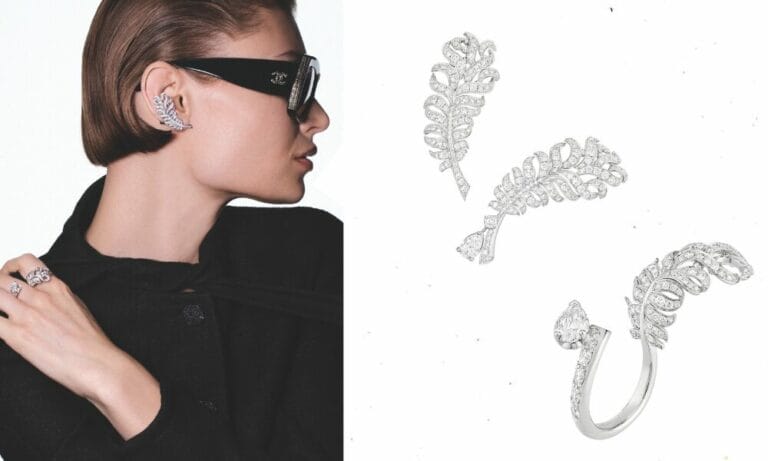Cartier has marked ten transformative years of its Maison des Métiers d’Art, a sanctuary where heritage craftsmanship is not only preserved but reimagined for the modern world. To celebrate this milestone, BURO was invited to step inside Cartier’s awe-inspiring facility in La Chaux-de-Fonds, Switzerland, for an intimate glimpse into the artistry that defines this extraordinary space.
At Cartier, tradition isn’t just revered; it’s redefined. The Maison des Métiers d’Art serves as a vibrant crossroads where ancient techniques like enamelling, granulation, and marquetry meet the ingenuity of modern innovation. For a decade, this hub of excellence has safeguarded and elevated artisanal savoir-faire, proving that tradition and technology can harmoniously shape the future.
Tucked within a meticulously restored 17th-century farmhouse, the Maison des Métiers d’Art is a masterful blend of history and modernity. Swiss architects Stéphane Horni and Gilles Tissot have preserved its rustic charm, think original stone floors, wooden panelling, and centuries-old fireplaces, while introducing cutting-edge facilities that breathe life into tradition. A central light shaft bathes the workspace in natural light, creating an environment as inspiring as the work itself. This seamless fusion of past and present perfectly encapsulates Cartier’s ethos: bridging eras to craft timeless masterpieces.

WHAT ROLE DOES THE MAISON DES MÉTIERS D’ART PLAY IN CARTIER’S CREATIVE PROCESS? CAN YOU SHARE SOME INSIGHTS INTO THE UNIQUE PIECES THAT HAVE EMERGED FROM THIS WORKSHOP?
The Maison des Métiers d’Art embodies the quest for excellence through innovation and the respect for savoir-faire that is part of the Maison. We nurture the unique alliance between craftsmanship and innovation.
For example, the Coussin watch is made possible not only by 3D printing techniques, but also by the work of jewelers and gem setters, to create this supple watch made up of a patterned interlocking gold links. When it comes to the Enamel Granulation, it is the perfect example of how important it is to be anchored into tradition to be able to innovate. Here, it is because our artisan masters the traditional enamel technics on one hand and the Granulation on the other that they were able to imagine with design teams a new technic in order to give colour to the traditional Etruscan Granulation. Those watches and the innovations that made them possible lead to different patterns.

CARTIER IS KNOWN FOR ITS EXQUISITE MATERIALS. HOW DO YOU SELECT MATERIALS FOR YOUR CREATIONS, AND WHAT IMPACT DO THEY HAVE ON THE OVERALL DESIGN AND CRAFTSMANSHIP?
We select our material in order to serve the design of the future piece, to represent at its best the Cartier style. We will select the most exquisite stone and finest material, in a responsible manner, combined with the knowledge and talents of our artisans, to create the finest creations for our clients.
Some pieces required specific material. For instance, the Ronde Louis Cartier Zebra and Giraffe watch, the artisans are selecting 6 gold alloys to evoke the animals represented on the watch, through striking spot patterns or the stripes of the zebra on the dial of the watch.

AS TECHNOLOGY EVOLVES, HOW DO YOU FORESEE THE FUTURE OF CRAFTSMANSHIP IN LUXURY WATCHMAKING AND JEWELRY? WHAT TRENDS DO YOU THINK WILL SHAPE THE NEXT GENERATION OF CARTIER CREATIONS?
The Maison des Métiers d’Art will keep pushing the boundaries of creativity and craftsmanship of our collections. It will remain the place whose mission is to innovate, preserve, and pass on the know-how to the next generation. We are intending also to welcome more artisans at the Maison des Métiers d’Art as well as to train the next generation of artisans through apprenticeship. Developing new artistic crafts and technologies through a dialogue between tradition and modernity will enable these crafts to stand the test of time, which is our commitment.
There is no compromise on the mastery of those new technics and ancient craftmanship, and their common trait is that they will always serve the design of the final Cartier creation.

WHAT ARE THE BIGGEST CHALLENGES IN MAINTAINING HIGH STANDARDS OF QUALITY AND CRAFTSMANSHIP ACROSS SUCH DIVERSE PRODUCT LINES?
Each of our collections and pieces require high quality standards, and each team is working according to those standards. Our creations are made to stand the test of time and accompany our clients.
In terms of the savoir-faire, one of the most complex pieces to make is the Vibrating Setting watch. A vibrating setting is the technique that allows the diamonds adorning the case to come to life at the rhythm of the wearer’s movement. The biggest challenge was to have all the diamonds moving at the same frequency. To meet our needs, our precision and quality requirements, it was essential to accompany this medical partner for the research. Three weeks were spent with the supplier to measure, test, and check the frequency because the size of the wire, thin as a hair, defines its frequency.

ALSO READ: HE’S THE ICON WHO OWNS IT: WATCH HIM SHINE IN THE BURO X CARTIER FESTIVE SHOOT.




